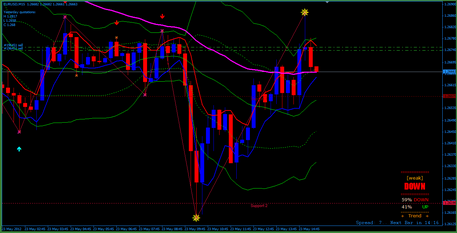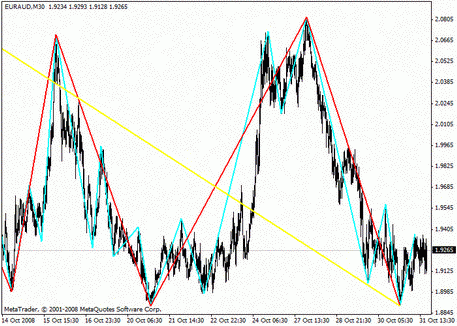
How to Determine the Levels of Support and Resistance Correctly?
Friday, 28 July 2017 16:08
The support and resistance lines are the levels where the price is most likely to reverse in the opposite direction. These lines are used by traders most often, and are one of the foundations of a technical analysis, being a base of a many strategies.
- The support lines are located below the price chart;
- The resistance is a line above the price chart.

There are many varieties of such levels, as well as methods of constructing them. If you plot both lines on the chart, you will get a price channel. There are many types of price channels, such as equidistant, channels of linear regression, standard deviation, Fibonacci, etc.
It’s worth noting that support and resistance are not always straight lines, they may be curves. For example, moving averages are often used as such levels.
Since these levels are plotted based on the minimum and maximum values of the price, they serve to find the successful points of opening the sales or purchases. Traders open deals on the breakdown of the lines, towards the price, or at the rebound from the level. As a rule, trading on the rollbacks is safer, since it may take a long time to find out, whether is a breakdown of the channel true. Obviously, the success of the trade mostly depends on the correctness of such a construction.
Construction of Lines
There is a variety of construction methods, developed for many years. If we turn to history, we will see that different classics of technical analysis offered different methods of construction.
- Murphy recommends drawing lines at local peak price values.
- Demark suggested drawing levels on key points of supply and demand. They were called TD-points, representing an abbreviation from the creator’s initials. Demark considered not the visible highs and lows, but those values of the price that meet certain criteria. TD-minimum should be less than the closing price of two bars before it, and the TD-maximum - respectively, should be higher.
- Schwager noted the subjectivity of the maximum and minimum values of the price. He argued that the emotional mood of the traders who started losing money is displayed at these points, and they are the last who leave the market. Obviously, most traders come out before the price reaches the peak values; therefore, it’s worth considering not the points, but the areas of consolidation. Thus, the lines should be drawn near the extremums, taking into account a small range of oscillations. As practice shows, the price rarely turns on the same value. Sometimes it crosses the levels, or turns, before reaching them.
- Elder prefers to build the lines on the edges of the consolidation area, noting that the price may fluctuate near such marks. As practice shows, breakdown of levels often turns out to be false, and even if the level is broken, the curve of the price often returns to it, testing it again.
Notes
It’s important to remember that there are strong and weak levels of resistance and support. Lines built on the older timeframes will be broken less likely than similar constructions on the short time intervals. Also, it’s worth considering the volume of trades, because if the extremum was formed due to a large amount of funds, even bigger forces of bulls or bears will be required to form a new extremum.
Share
Related articles
- Previous article: Trend Lines
- Next article: Forex Signals

 English
English
 русский
русский



